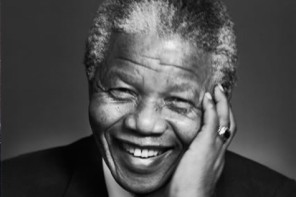In 2015, the global fashion industry represented 500 billion dollars. Yet the African market only represents 31 Billion dollars. The continent’s share of this market is called to grow despite itself; Diesel and Tommy Hilfiger, are not the only ones who want to work with Ethiopia. Moreover, the figures show that there is a real opportunity in this industry. Some 20 years ago, companies such as Woodin or Pathé’O – created and managed respectively in Ghana and Côte d’Ivoire – were emerging on the continent and attracting consumers of the high society. This is no longer the case today, even if more and more people want to wear and represent the «Made in Africa». Nevertheless, some countries have decided to hold their own game, even
if the road is still long.
South Africa needs to confirm its leadership
The clothing industry, textile, leather and footwear account for 8% of the GDP of South Africa. Unfortunately, this sector is in decline: it employed 80,000 people in 2013 against
181,000 in 2002. However, activities could resume, knowing that 25-30% of clothing sold in South Africa are manufactured within the country. In addition, government investment through the ‘Clothing and Textile Competitiveness Programme’ – which aims to create significant growth in the sector – is a real boost to the industry.
Nigeria is betting on education and financing
Last August the Bank of Industry of Nigeria opened a fund of 4.5 million euros (1 billion
Naira) to support businesses run by women and operating in the area of
fashion and textile. Each of them have the opportunity to borrow up to 22,000 euros (5million Naira) to develop their businesses. But Nigeria also has education dynamics: 450 students graduate every year out of Yaba College of Technology Fashion School. They are trained to make the fashion industry profitable through several trades. In addition, Nigeria is known for the quality of its prints and its ancestral knowledge on tanning. It supplies many European luxury brands such as Fendi, Hermes and Bottega Veneta.
Also Read: Ethiopian leather – Many contenders for the queen of Sheba
Ethiopia: The next queen of Leather
Ethiopia wants to establish itself as the global leader in of leather production. In 2012, the exportation of leather represented $123 million, equating to 73% of exports. But Ethiopia does not count only on export of leather. This country provides more than 160,000 pieces per month to H & M, the world number 2 Textile and plans to produce four times more pieces in
5 years. The 4th country in Sub-Saharan Africa judging by its growth and the 2nd most populous country on the continent – with 94.1 million inhabitants – is also the country where annual incomes rarely exceed $400/year. If the country is successful in attracting more multinationals, it will undoubtedly create more jobs, and in the long-term increase the income of its population.
Ghana: The big “loser”
African countries are often subject to sudden changes. In Ghana, the textile industry loses
69 million euros (300 Ghanaian Cedis Billion) each year. This country, which had 40 companies dedicated to textile and garment accessories only 20 years ago, has only four textile factories today. Several countries, such as Cameroon or Ivory Coast have seen their textile industry also die. The question arises: Is the awakening soon to come by?





